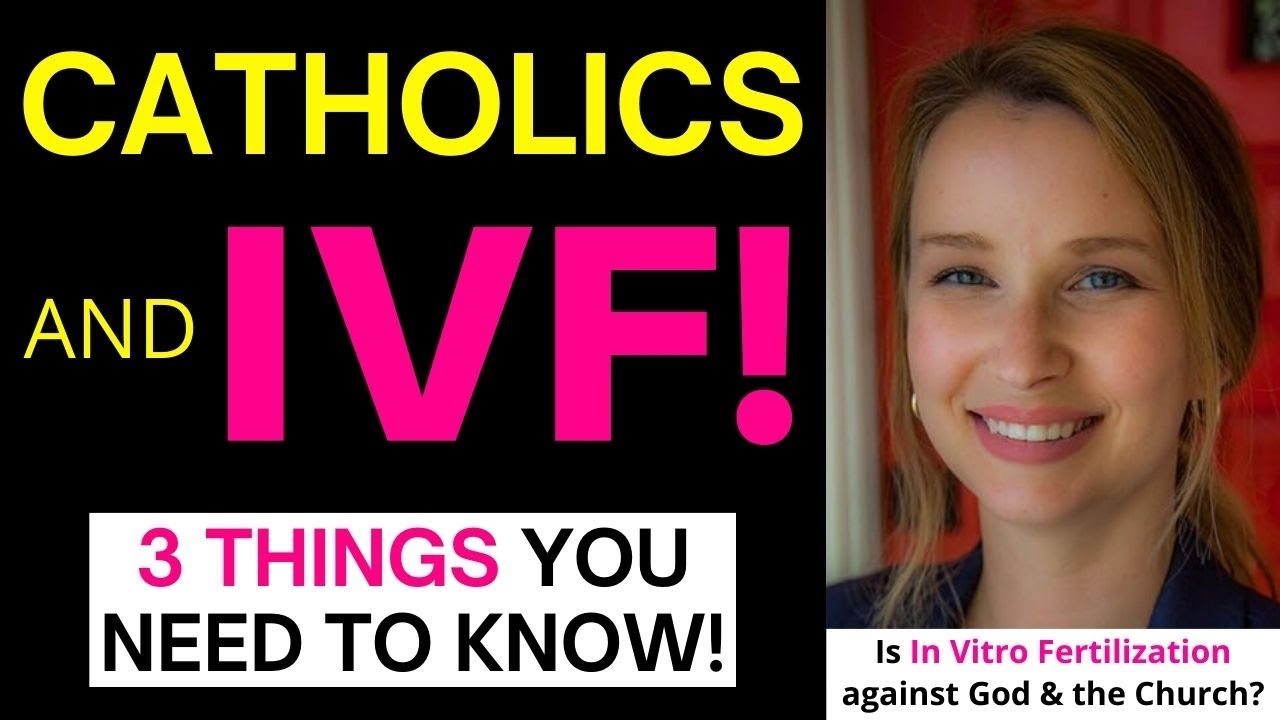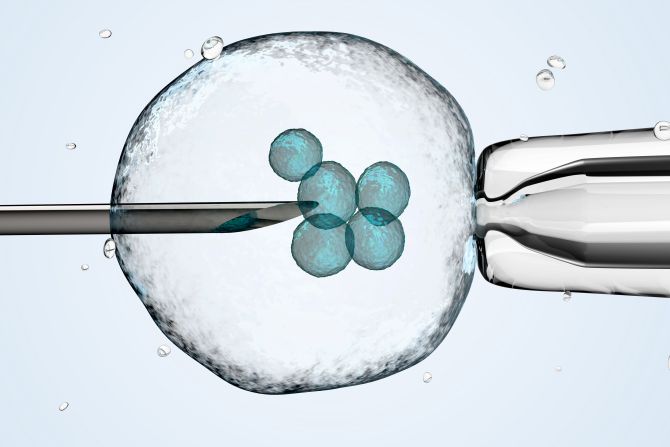
Boston IVF Albany: Your Guide to Fertility, Hope, and Hidden Gems
April 13, 2025The Catholic Church and IVF: What You Need to Know
When you hear about in vitro fertilization (IVF), you might picture hopeful parents, high-tech labs, and tiny miracles. It’s a topic that’s everywhere—on TV, in magazines, and maybe even in your family group chat. But did you know the Catholic Church has a strong stance on IVF that’s different from what most people think? If you’re curious about why the Church says “no” to IVF, what it means for families, and how this fits into everyday life, you’re in the right place. This article dives deep into the Catholic Church’s views on IVF, uncovers some lesser-known details, and gives you practical insights—whether you’re Catholic, just exploring, or trying to understand a friend’s perspective.
Let’s break it down together. We’ll explore the Church’s teachings, peek into real-life struggles, and even look at the latest science. Plus, I’ll share some unique angles you won’t find everywhere else—like how this connects to hobbies, personal dreams, and even surprising stats. Ready? Let’s get started.

Why Does the Catholic Church Oppose IVF?
The Catholic Church has a clear answer when it comes to IVF: it’s a no-go. But why? At first glance, it might seem strange—after all, isn’t having kids a good thing? The Church agrees kids are awesome, but it’s all about how they come into the world. Here’s the scoop.
The Big Idea: Life and Love Go Together
The Church believes that making a baby should happen through the love between a husband and wife—in a natural, personal way. IVF, though, takes that process out of the bedroom and into a lab. Sperm and eggs are collected, mixed in a dish, and embryos are created by scientists. To the Church, this splits apart two things that should stay connected: love (the marriage act) and making life (procreation).
- Core Point: The Church teaches that every child deserves to be conceived through an act of love, not a technical procedure.
- Why It Matters: This isn’t just a rule—it’s about dignity. The Church sees every person as a gift, not a product you can order up.
Imagine it like baking a cake. If you mix the ingredients with your hands, it’s personal and full of care. But if a machine does it all, it’s just… different. The Church wants that personal touch to stay in the picture when it comes to creating life.
The Embryo Problem: What Happens to the “Extras”?
Here’s something you might not think about: IVF often creates more embryos than a couple needs. So what happens to the rest? Some get frozen, some are thrown away, and others might be used for research. The Church says, “Hold up—that’s not okay.” Why? Because it believes life starts at conception, meaning every embryo is a human being with rights.
- Shocking Stat: Experts estimate there are over 1 million frozen embryos in the U.S. alone. That’s a million tiny lives on hold—or worse.
- Church View: Throwing away or experimenting on embryos is like throwing away a person. It’s a big moral red flag.
Think of it this way: if you had a bunch of baby chicks, you wouldn’t just toss the ones you didn’t need, right? The Church sees embryos the same way—each one is precious.
Real Talk: It’s Not About Judging Parents
Now, here’s a twist a lot of people miss: the Church isn’t out to shame couples who want kids. It gets that infertility hurts—big time. In fact, the Church calls it a “great cross” that couples carry. The problem isn’t the desire for a baby; it’s the method.
- Expert Quote: “The Church teaches that children have a right to be conceived within marriage through love, not produced in a lab,” says John Di Camillo, an ethicist at the National Catholic Bioethics Center.
- Friendly Note: If you’ve done IVF or know someone who has, the Church isn’t pointing fingers. It’s more about guiding future choices.
So, it’s not “You’re bad for wanting a family.” It’s “Let’s find a way that respects everyone involved—especially the kids.”
What Does the Church Say Instead?
Okay, so IVF’s off the table. But what can Catholic couples do if they’re struggling to have a baby? The Church has some ideas—and they’re not just “pray and hope.” Let’s check them out.
Natural Options: Healing the Root Cause
The Church is cool with treatments that fix infertility without replacing the natural process. Think of it like fixing a car so it runs again, not building a new one from scratch.
- NaPro Technology: This is a big one. It’s a science-based method that tracks a woman’s cycle to find and fix problems—like hormone issues or blockages. Studies show it can double the chances of getting pregnant naturally compared to just waiting it out.
- ✔️ Pro: Works with your body, not against it.
- ❌ Con: Takes time and effort—sometimes months of tracking.
- Surgery or Meds: Things like removing scar tissue or taking fertility drugs (if they help natural conception) are totally fine.
Adoption: A Different Kind of Miracle
If natural conception isn’t happening, the Church loves the idea of adoption. It’s not just a backup plan—it’s a beautiful way to build a family.
- Fun Fact: Did you know St. Joseph, Jesus’ earthly dad, was technically an adoptive father? Adoption’s got deep roots in Catholic life.
- Stats: Over 135,000 kids are adopted in the U.S. each year, and many Catholic agencies help make it happen.
- Practical Tip: Look into local Catholic adoption agencies—they often guide you step-by-step, from paperwork to meeting your child.
Living Without Kids: Finding Joy Anyway
Here’s a secret not everyone talks about: some Catholic couples don’t end up with kids, and that’s okay. The Church says marriage is about love and support, not just babies. Couples can pour their energy into hobbies, volunteering, or being the coolest aunt and uncle ever.
- Example: Meet Sarah and Mike, a Catholic couple from Ohio. After years of infertility, they started a community garden. Now they “parent” plants and feed their neighborhood—talk about a win!

The Science Behind IVF: What’s Really Going On?
IVF sounds like magic, but there’s a lot under the hood. Let’s pull back the curtain and see what’s happening—plus some stats you won’t find on every blog.
How IVF Works: A Quick Rundown
Here’s the basic process, step-by-step:
- Step 1: Supercharge the Eggs – A woman takes drugs to make her ovaries produce lots of eggs (way more than normal).
- Step 2: Collect the Goods – Doctors grab the eggs with a needle and get sperm from the guy (usually through, uh, private time).
- Step 3: Lab Magic – Eggs and sperm meet in a dish, and embryos start growing.
- Step 4: Pick and Place – Doctors choose the “best” embryos and put one or two in the womb. The rest? Frozen or discarded.
- Cool Fact: The first IVF baby, Louise Brown, was born in 1978. Since then, over 8 million IVF babies have arrived worldwide.
The Success Rate: Not a Sure Thing
IVF isn’t a golden ticket. Check out these numbers from the CDC (2023 data):
- Under 35: About 50% chance of a baby per cycle.
- Over 40: Drops to 12%—and that’s with multiple tries.
- Average Cost: $12,000-$15,000 per round. Ouch.
- Hidden Truth: Most couples need 2-3 cycles, so you’re looking at $30,000+ and still no guarantee.
The Leftovers: A Million Frozen Embryos
Remember those extra embryos? They’re a huge deal. A 2022 study estimated 1.5 million embryos are frozen in the U.S.—and many won’t ever get a chance to grow.
- What Happens:
- ✔️ Kept frozen (costs $500-$1,000 a year to store).
- ❌ Thrown out if parents stop paying or don’t need them.
- ✔️ Donated to research (controversial for Catholics).
- Weird Angle: Some couples nickname their frozen embryos—like “Frosty” or “Snowflake.” It’s sweet but also shows how personal this gets.
Real Stories: Catholics Facing IVF Choices
Rules are one thing, but what about real people? Let’s meet some Catholics wrestling with infertility and see how they handle the Church’s stance.
Emily’s Story: “I Wanted a Baby, Not a Fight”
Emily, 32, from Texas, always dreamed of a big family. When she and her husband couldn’t conceive, their doctor pushed IVF. “I didn’t even know the Church was against it,” she admits. After reading up, she felt torn—her faith said no, but her heart said yes.
- Her Move: Emily tried NaPro instead. It took a year, but she had a son naturally. “It was hard, but I’m glad I stuck with it,” she says.
- Lesson: Patience paid off, but it wasn’t easy.
Mark’s Dilemma: “I Went Against the Rules”
Mark, 40, from Chicago, grew up Catholic but chose IVF after five years of waiting. “I couldn’t watch my wife cry anymore,” he says. They have twins now—and two frozen embryos he’s not sure what to do with.
- His Take: “I don’t regret my girls, but I feel guilty sometimes. The Church feels far away now.”
- Twist: Mark’s a huge sci-fi fan—he jokes his twins are “lab-grown Jedi,” but the humor hides his struggle.
Lisa’s Peace: “Kids Aren’t My Whole Story”
Lisa, 38, from California, never got pregnant or adopted. Instead, she and her husband travel, paint, and volunteer at their parish. “I used to think I’d failed,” she says. “Now I see God had other plans.”
- Hobby Connection: Lisa’s watercolor art has won local awards—proof life can bloom in unexpected ways.
IVF and the Church: Myths vs. Facts
There’s a lot of confusion out there. Let’s clear up some myths with straight-up facts—plus a few surprises.
Myth #1: “The Church Hates Science”
- Fact: Nope! The Church loves science that heals—like NaPro or surgeries. It just draws the line at lab-made babies.
- Proof: Pope Francis has praised medical research that respects life. Science isn’t the enemy; misuse is.
Myth #2: “IVF Babies Aren’t Loved by God”
- Fact: Totally false. The Church says every child—IVF or not—is a gift from God with full dignity.
- Expert Quote: “People born through IVF have no less worth than anyone else,” says a U.S. Bishops’ statement from 2024.
Myth #3: “Catholics Can’t Ever Do IVF”
- Fact: Technically true, but there’s grace. If someone didn’t know the rules and did IVF, the Church welcomes them back with open arms after confession.
- Real-Life Hack: Many priests counsel couples to explore alternatives, not just judge past choices.
What’s New in 2025? IVF Updates and Catholic Responses
Things are always changing—here’s the latest on IVF and how the Church is reacting as of March 2025.
Tech Advances: Better Odds, Same Problems
New IVF tech in 2025 promises higher success rates—like AI picking the “best” embryos. Sounds cool, right? But the Church says it’s still the same old issue: embryos are treated like objects, not people.
- Study Alert: A 2024 report found AI-boosted IVF ups success by 10%, but discard rates stay high (90% of embryos don’t make it).
Legal Drama: Frozen Embryos in Court
After Alabama’s 2024 ruling that embryos are legally “children,” some states are rethinking IVF laws. The Church cheers the life part but worries it might push more couples to freeze embryos anyway.
- Practical Tip: If you’re Catholic and curious, chat with a priest about local laws—they’re often in the know.
Church Outreach: More Support, Less Silence
In 2025, some dioceses are stepping up with infertility support groups. Think workshops, prayer nights, and even NaPro info sessions.
- Example: The Diocese of Phoenix just launched “Hopeful Hearts,” a program pairing couples with mentors who’ve been there.
